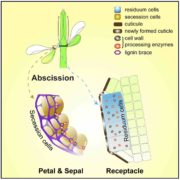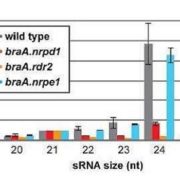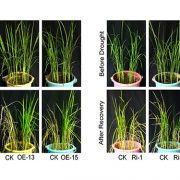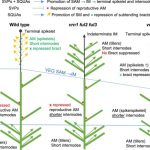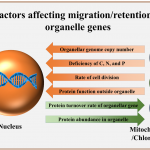Sheathing leaf: The grass leaf conundrum!! (Science)
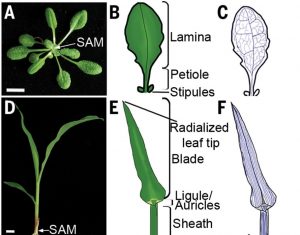 One of the peculiar features of monocots is the presence of sheathing leaf base that encircles the stem, which allow grasses to grow in height, while protecting apical meristem from herbivores by keeping it lower to the ground. Despite its significance, the evolutionary origin has been a controversy for many years. While in 19th century “petiole-sheath” hypothesis was proposed stating grass sheath is equivalent to petiole of eudicot leaves; the 20th century “petiole-leaf” hypothesis suggested that the entire grass leaf is mainly derived from petiole. Using the combination of developmental genetics and computational modelling, Richardson et al. revisited this longstanding unanswered question. The authors built a computational model to understand the grass leaf morphology and to resolve the hypothesis predictions. To gain more insights into the relationship between grass and eudicot leaf, the grass leaf model was modified to produce eudicot leaf, and the assumptions and predictions from the simulations favored the 19th century view of “petiole-sheath” homology. The author highlights that the “key step in grass evolution was the extension of primordium identity and WOX activity along the ad-abaxial boundary to encircle the apex”. (Summary by Prakshi Aneja @PrakshiAneja) Science. 10.1126/science.abf9407
One of the peculiar features of monocots is the presence of sheathing leaf base that encircles the stem, which allow grasses to grow in height, while protecting apical meristem from herbivores by keeping it lower to the ground. Despite its significance, the evolutionary origin has been a controversy for many years. While in 19th century “petiole-sheath” hypothesis was proposed stating grass sheath is equivalent to petiole of eudicot leaves; the 20th century “petiole-leaf” hypothesis suggested that the entire grass leaf is mainly derived from petiole. Using the combination of developmental genetics and computational modelling, Richardson et al. revisited this longstanding unanswered question. The authors built a computational model to understand the grass leaf morphology and to resolve the hypothesis predictions. To gain more insights into the relationship between grass and eudicot leaf, the grass leaf model was modified to produce eudicot leaf, and the assumptions and predictions from the simulations favored the 19th century view of “petiole-sheath” homology. The author highlights that the “key step in grass evolution was the extension of primordium identity and WOX activity along the ad-abaxial boundary to encircle the apex”. (Summary by Prakshi Aneja @PrakshiAneja) Science. 10.1126/science.abf9407



